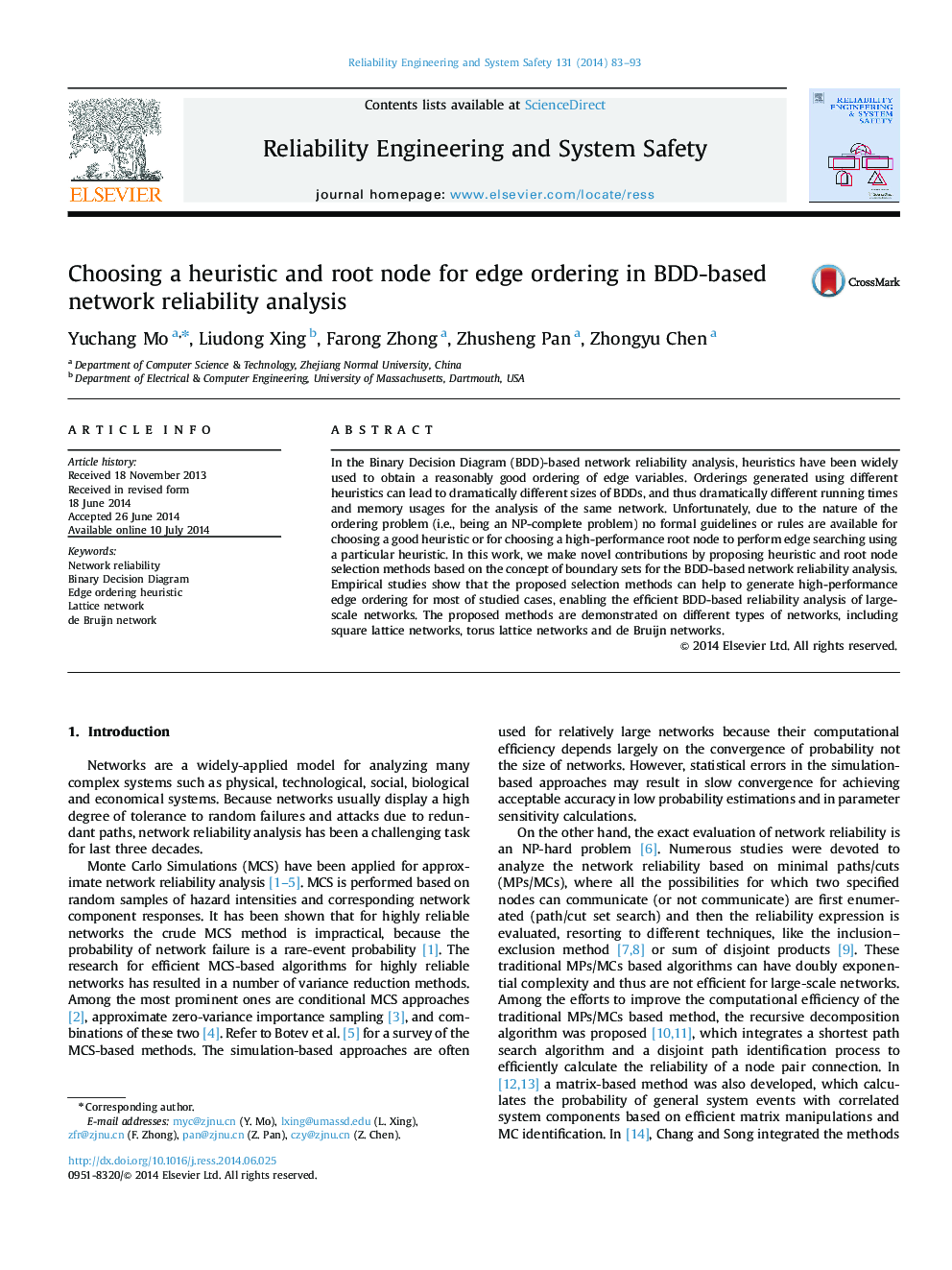| Article ID | Journal | Published Year | Pages | File Type |
|---|---|---|---|---|
| 806766 | Reliability Engineering & System Safety | 2014 | 11 Pages |
In the Binary Decision Diagram (BDD)-based network reliability analysis, heuristics have been widely used to obtain a reasonably good ordering of edge variables. Orderings generated using different heuristics can lead to dramatically different sizes of BDDs, and thus dramatically different running times and memory usages for the analysis of the same network. Unfortunately, due to the nature of the ordering problem (i.e., being an NP-complete problem) no formal guidelines or rules are available for choosing a good heuristic or for choosing a high-performance root node to perform edge searching using a particular heuristic. In this work, we make novel contributions by proposing heuristic and root node selection methods based on the concept of boundary sets for the BDD-based network reliability analysis. Empirical studies show that the proposed selection methods can help to generate high-performance edge ordering for most of studied cases, enabling the efficient BDD-based reliability analysis of large-scale networks. The proposed methods are demonstrated on different types of networks, including square lattice networks, torus lattice networks and de Bruijn networks.
